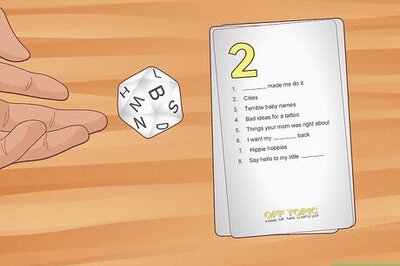
views
Long gone are those days when only coders were central to game development, working on writing the least amount of code to make a game operate within the limited storage capacity of personal computers and mobile phones. Today, games have moved beyond code and tell a story through words and imagery to be able to draw people in and keep them engaged.
Gamers now want as immersive an experience that allows them to escape the mundane realities of life, transports them to a fantastical landscape, or helps them while away the lonely hours spent at home in the midst of a global pandemic. This ever-increasing interest in gaming translates to a significant boom in the game development industry.
Also read| How to Build a Career in Gaming: From top Courses to Job Scenario- All You Need to Know
From certification programmes and diplomas to full-fledged bachelor’s and master’s degrees, there is a wide variety of opportunities to turn aspirants’ passion for gaming and talent in design, art, or storytelling into a thriving career.
There are more than 400 gaming start-ups across the country, opening up several innovative job opportunities for India’s diverse talent pool.
What is expected of a game designer
A majority of the game development courses focus on imparting the skills necessary to succeed and innovate in a student’s preferred field, enhancing their core competencies and technical know-how to match international standards. A career in game design requires creativity, spatial awareness, and a thorough understanding of human psychology.
A game designer is someone who understands what constitutes good gameplay and designs the various aspects of a game from scratch. They must be able to put themselves in a player’s shoes, mapping multiple possibilities on a 2D drawing software while also figuring out the sequence of events, progression criteria and the in-game challenges users will face. The game design includes sub-areas such as level design, content design, and interface design.
What do game artists do
Game artists, on the other hand, are responsible for developing the visual aspects of a game. From 2D and 3D modelling to concept art, textures and VFX, these creative minds are central to bringing a game to life. They use computer programmes such as Adobe Photoshop, Adobe Illustrator, Adobe After Effects, CAD and Auto desk Maya, along with traditional hand sketching, to create everything from in-game characters, layouts, backgrounds, props and scenes. Core competencies for this field include eye for detail, conceptualisation, training in animation and game art and cinematographic expertise.
Read| Passionate About Video Games? Here’s How to be a Game Developer
Apart from music and films, gaming has blossomed as one of the most profitable sectors in the entertainment industry, with games such as Grand Theft Auto V (GTA V) grossing more than $1 billion in revenue within three days of its release.
While the global gaming industry is expected to register a CAGR of 9.64 per cent by 2026, the Indian gaming domain, despite being nascent, exhibits great promise with ample opportunities for growth and recognition.
In 2020, the gaming industry racked up $155 billion in revenue, a number that analysts predict will go up to $260 billion by 2025. If we turn to India, the easy availability of affordable gaming systems and cheap data plans have paved the way for the country to emerge as one of the fastest-growing gaming markets in the world. According to an Invest India report, the gaming industry in India is currently valued at $930 million and is projected to grow at 41 per cent each year. It would, therefore, be safe to say that the game development industry is poised to become one of the most employable sectors in the country in the near future.
— Authored by Dakshita Khandelwal Managing Partner, École Intuit Lab New Delhi Co-founder, JS Institute of Design
Read all the Latest Education News here




















Comments
0 comment